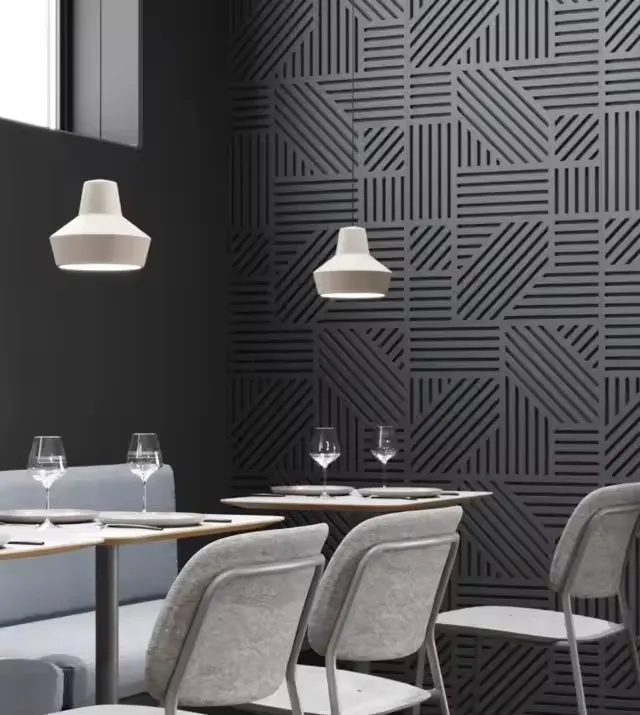The Benefits and Versatility of Acoustic Ceilings
In the modern construction and design landscape, acoustic ceilings have emerged as an essential aspect of interior design, particularly within commercial spaces such as offices, schools, and public buildings. Known for their sound-absorbing properties, these ceilings enhance the auditory environment, create a more comfortable atmosphere, and improve overall aesthetic appeal. This article aims to explore the various benefits and versatility of acoustic ceilings, illustrating why they are a popular choice for both new constructions and renovations.
Understanding Acoustic Ceilings
Acoustic ceilings are designed to reduce noise levels within a space by absorbing sound waves. They are typically constructed from materials such as mineral fiber, fiberglass, or foam, which break up sound reflections and minimize echoes. The design of these ceilings can either be suspended or directly fixed to the overhead structural framework. The benefit of acoustic ceilings extends beyond mere sound control; they can also contribute to energy efficiency and enhanced indoor air quality.
Noise Reduction and Improved Acoustics
One of the primary advantages of acoustic ceilings is their ability to mitigate noise pollution. In open-plan offices, for instance, the clattering of keyboards, phone conversations, and even footsteps can lead to distractions that negatively impact productivity. Acoustic ceilings can absorb these sounds, contributing to a peaceful work environment. By controlling noise levels, employers can enhance focus and creativity among their employees.
In educational institutions, the same principle applies. Classrooms with high ceilings and hard surfaces often suffer from excessive noise, making it difficult for students to concentrate and teachers to communicate effectively. Acoustic ceilings help to create a conducive learning environment by improving speech intelligibility and maintaining an appropriate noise level. Research has shown that better acoustics can lead to improved learning outcomes, making acoustic ceilings a wise investment in educational facilities.
Aesthetic Versatility
acoustic ceiling

Beyond functionality, acoustic ceilings offer significant aesthetic potential. They are available in a variety of styles, colors, and textures, allowing designers to tailor them to suit the specific needs of a space. From sleek, modern designs to more traditional looks, there is an acoustic ceiling option to fit every architectural theme. Additionally, many acoustic products now come with customizable options, such as printable panels that can feature artwork or branding elements, further enhancing the visual appeal of a space.
Acoustic ceilings can also be integrated with other design elements such as lighting fixtures, HVAC systems, and even smart technology. Suspended acoustic ceiling tiles provide easy access to maintenance spaces above, ensuring that mechanical systems can be serviced without major disruptions to the interior design. In this way, the versatility of acoustic ceilings makes them a seamless addition to any modern interior.
Energy Efficiency and Sustainability
Today’s consumers and businesses are more environmentally conscious than ever, and acoustic ceilings can help achieve sustainability goals. Many acoustic ceiling materials are made from recycled content, making them an eco-friendly choice. Furthermore, by improving the thermal insulation of a space, acoustic ceilings can contribute to energy savings. They reduce the need for heating and cooling, especially in spaces with high ceilings or extensive glass facades.
By selecting acoustic ceilings that offer both sound absorption and thermal insulation, businesses and homeowners alike can create a more sustainable environment while reaping the benefits of reduced energy costs.
Conclusion
In conclusion, acoustic ceilings represent a significant advancement in interior design, combining functionality, aesthetic appeal, and sustainability. Their noise-reducing properties not only enhance comfort and productivity in commercial spaces but also contribute positively to educational environments. With their versatile design options and potential for energy efficiency, acoustic ceilings are set to remain a popular choice in both current and future construction projects. By investing in acoustic ceilings, property owners can transform their spaces into effective, pleasant, and environmentally friendly areas that cater to the needs of their occupants. Whether in a bustling office or a serene classroom, the impact of an acoustic ceiling can be profound, making it an essential consideration in modern design.
-
Waterproof Dog Blankets for Indoor and Outdoor UseNewsAug.01,2025
-
Sustainable Wool Cat Beds Eco-Friendly Choices for Pet OwnersNewsAug.01,2025
-
Snuffle Ball Benefits for Dogs Mental Stimulation and ExerciseNewsAug.01,2025
-
Puppy Treat Puzzles as Social Tools Fostering Bonding Through PlayNewsAug.01,2025
-
Custom Wooden Pet Houses Tailored to Your Pet’s PersonalityNewsAug.01,2025
-
Corrosion Resistance in Environments: A Guide for Washer Hose ClampsNewsAug.01,2025
